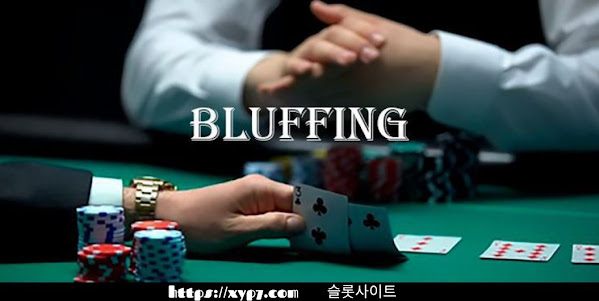Poker Proficiency: Mastering the Art of Online Bluffing
Bluffing in poker is an art form, especially in the online world where you can’t rely on physical tells. Mastering online bluffing requires a blend of psychological insight, strategic planning, and mathematical understanding. In this article, we delve into the essential elements of bluffing effectively in online poker, offering strategies and tips to elevate your 카지노사이트 game.
Understanding the Fundamentals of Bluffing
What is Bluffing?
Bluffing is a strategy used in poker to deceive opponents into thinking you have a stronger hand than you actually do. The primary goal of bluffing is to make opponents fold their superior hands, allowing you to win the pot without needing the best cards.
Types of Bluffs
- Pure Bluff: This is a high-risk move where you bet or raise with a weak hand, relying entirely on the possibility that your opponent will fold.
- Semi-Bluff: In this situation, you bet with a hand that isn’t currently strong but has the potential to improve on future streets (e.g., drawing hands).
- Continuation Bet (C-Bet): After raising pre-flop, you continue to bet on the flop regardless of whether it improved your hand, capitalizing on your pre-flop aggression.
Crafting a Bluffing Strategy
Choosing the Right Moment
Successful bluffing hinges on timing. It’s crucial to assess the game’s context, including your position, the opponents’ tendencies, and the board texture. Bluffing from late positions often carries more credibility and less risk than from early positions.
Reading Your Opponents
Understanding your opponents is key. Look for players who fold frequently under pressure (good targets for bluffs) and avoid those who call too often (bad targets). Use HUDs (Heads-Up Displays) if available to track opponent tendencies and inform your decisions.
Board Texture Analysis
The texture of the community cards is vital. Dry boards (e.g., A-7-2 rainbow) are great for bluffing since they’re less likely to have hit your opponents’ hands. Wet boards (e.g., 9-8-7 with two suited cards) are dangerous for bluffing due to the high potential for strong hands and 온라인카지노 draws.
Executing the Bluff
Bet Sizing
Bet sizing is a critical element of bluffing. Your bet needs to be convincing—too small and it won’t scare anyone off, too large and it risks too much of your stack. Aim for a size that makes sense within the context of the hand, often between 50-75% of the pot.
Balancing Your Bluffing Frequency
Bluffing too often makes you predictable, while never bluffing makes you easy to read. Strike a balance by bluffing selectively and varying your play to maintain an unpredictable image. Use the concept of game theory optimal (GTO) play to help guide your bluffing frequency.
Controlling the Narrative
Poker is a game of storytelling. The actions you take throughout the hand should tell a consistent story. If you’re representing a strong hand, your betting pattern must align with how you’d play such a hand. Inconsistencies can give away your bluff.
Advanced Bluffing Techniques
The Double Barrel Bluff
A double barrel bluff involves continuing to bluff on both the flop and the turn. This can be effective if the turn card changes the board significantly or is a scare card for your opponent (e.g., an overcard or a card completing a potential flush).
The Triple Barrel Bluff
The triple barrel bluff takes it a step further by continuing the aggression on the river. This is high-risk but can be profitable against tight players who fold on later streets. Ensure the river card doesn’t drastically improve your opponent’s likely holdings.
The Check-Raise Bluff
The check-raise bluff involves checking to induce a bet from your opponent and then raising. This can be a powerful move, especially on dry boards where your opponent might interpret your raise as a sign of strength.
Floating
Floating is calling a bet with the intention of bluffing on a later street. This can be effective if you suspect your opponent is making a weak continuation bet and will fold to pressure on the turn or river.
Psychological Aspects of Bluffing
Staying Calm Under Pressure
Bluffing requires a calm and composed mindset. Avoid emotional decisions (tilting) and stay focused on your strategy. Practicing mindfulness and stress-management techniques can help maintain your composure.
Perception Management
Your table image influences the effectiveness of your bluffs. If you’ve been playing tight and conservative, your bluffs are more likely to be believed. Conversely, if you’ve been caught bluffing frequently, tighten up and regain credibility before attempting more bluffs.
Exploiting Opponent’s Psychology
Understanding the psychological state of your opponents can provide bluffing opportunities. Players who have recently suffered a bad beat might be more inclined to fold, while those on a winning streak might call more loosely.
Conclusion
Mastering the art of online bluffing in poker requires a blend of skill, psychology, and strategy. By understanding the fundamentals, crafting a well-thought-out strategy, and employing advanced techniques, you can become a formidable opponent at the online poker table. Remember, the key to effective bluffing is maintaining balance and unpredictability in your game. Stay observant, adapt to your opponents, and most importantly, enjoy the thrill of the 바카라사이트 game.




Comments
Post a Comment